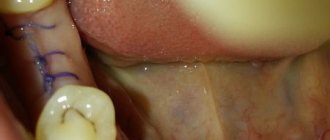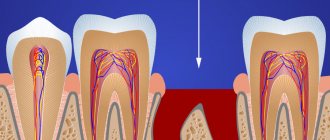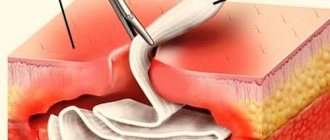How many days does the flux go away after tooth extraction depends on the severity of the tumor and the cause of its appearance. On average, swelling subsides in 2 to 5 days, and full recovery takes from 2 to 4 weeks.
There are two options for the development of gumboil or, as dentists call it, periostitis. In one case, it appears as a complication after removal of destroyed units. In the second, it occurs against the background of inflammatory processes and becomes a reason for extraction. After treatment of both diseases, standard postoperative swelling occurs, which should be distinguished from complications.
What is the essence of the problem
After the tooth was removed, flux formed. What it is? Scientifically, the disease is called periostitis. This is a purulent-inflammatory process that forms in the periosteum of the upper or lower jaw. Simply, a person who is faced with this disease has a swollen cheek, a rise in body temperature and signs of intoxication of the body such as weakness and malaise. But we will talk about the main symptoms of the pathology later.
It is generally accepted that periostitis (this is what gumboil is officially called) occurs due to the presence of diseased teeth in the mouth affected by caries, pulpitis and periodontitis. However, pathology can also develop when the main source of the problem is removed.
Why does pathology develop?
The development of a purulent-inflammatory process is provoked by bacteria that penetrate the tissue before the extraction procedure (i.e., tooth extraction), during or after it. Let's look at each scenario in more detail.
Advanced dental diseases before the extraction procedure
It often happens that the patient already had gumboil, his tooth was removed, but the tumor remained. That is, initially a person came to dentistry with an acute or chronic inflammatory process that arose against the background of advanced caries, pulpitis or periodontitis. Doctors carried out extraction, antiseptic treatment of the hole and its curettage (cleaning), opened the abscess, and prescribed antibiotics. And if the patient does everything correctly, in accordance with the recommendations, then the flux gradually goes away, but this does not happen instantly, because the inflammation has been present in the tissues for a long time.
If, after pulling out a tooth, you ignore medical recommendations, then the gumboil does not go away or even becomes larger.
2. Unprofessional actions of the doctor during extraction
If flux appears after tooth extraction, this may be due to a violation of asepsis during the surgical operation. The specialist could have carried out poor quality sanitation of the hole and introduced an infection inside. The problem can be caused by the presence of fragments or remnants of roots, filling material, or instrument fragments in the tissues.
Important! To avoid the formation of cheek flux after tooth extraction and other complications, it is necessary to monitor the work of a doctor. At the final stage of the surgical operation, professional dental surgeons must take an x-ray (especially if the extraction procedure was complex and it was necessary to use a bur, extracting the root in parts). An X-ray examination allows you to check whether there are any fragments left in the socket that can cause inflammation. For more information about whether you need to take an x-ray after extraction, read the feature article on the website.
Failure to comply with recommendations during the rehabilitation period
Flux is one of the common complications that arise due to neglect of the following recommendations in the first 2–4 days:
- active chewing of food on the side of the jaw where the intervention took place, eating irritating foods (hard, hot, spicy),
- direct impact on a socket that has not yet healed: active rinsing, damage with a brush, tongue, finger, or foreign objects. As a result, a protective clot disappears from the wound, which prevents bacteria from penetrating inside,
- drinking alcohol and smoking,
- refusal to take medications and antibiotics prescribed by a dentist,
- applying warm compresses, warming the cheeks, visiting the sauna and steam room, physical activity, long stays in the open sun,
- complete lack of oral hygiene.
Flux in a child
Every mother tries to protect her child from various diseases. But sometimes even regular teeth brushing and limiting sweets do not help avoid dental pathologies. But the danger is that they develop very quickly and make themselves felt already in the presence of swelling or severe pain. Swelling is especially dangerous. It is a symptom of flux. This is a very dangerous condition that requires treatment. Therefore, every mother should know how flux manifests itself in a child, what to do when it is detected, and what complications it can cause.
Causes and symptoms of flux
Flux develops in a child for various reasons. Most often, the inflammatory process results from infection in the periapecal area. Pathogenic bacteria that cause flux can enter both the bloodstream and through injured tissue. As a result, pus forms in the affected area and swelling appears.
The disease is characterized by severe pain. The swelling gradually spreads to the surrounding tissues and can cover the entire cheek, infraorbital area, nose and lips. In some children, gumboil flux is accompanied by an increase in body temperature, but this symptom is not necessary.
Separately, you need to consider flux during teething. Pericoronitis develops in cases where the tooth fails to erupt on its own, which leads to inflammation of the gums. As a rule, gumboil in this pathology is accompanied by hyperemia and swelling. In addition, the gums can be injured as a result of biting by neighboring teeth.
Flux can occur in acute and chronic forms. Acute is characterized by pronounced symptoms. Chronic can occur as a result of improper treatment or after ineffective treatment of an acute process. Despite the absence of swelling, the infection gradually spreads to the surrounding tissues, affecting the entire periosteum. The whole danger of chronic flux is that the presence of the inflammatory process negatively affects not only the condition of baby teeth, but also the rudiments of permanent teeth. As a result, even after eliminating the chronic process, the permanent teeth grow already affected, and there is also a violation of their eruption and location.
It is important to remember: if flux occurs on the cheek, you need to see a dentist as soon as possible and undergo treatment.
First aid
Considering the complications that flux can cause in a child, treatment should only be carried out by a doctor. If you are unable to see a dentist, first aid is required. It consists of the following procedures:
- rinsing the mouth with chamomile decoction or soda;
- treating swollen gums with iodine solution using a cotton swab;
- applying something cold.
You cannot give pills yourself. This way you will only relieve the symptoms of flux, which will provoke the formation of a chronic process.
Treatment of the disease
Treatment of pathology is carried out in two ways:
- conservative, that is, preserving the tooth;
- surgical - with tooth extraction.
The first method is used only in cases where it is necessary to save a tooth by any means. It is more suitable for adult patients. Children have baby teeth, so surgical intervention is preferred.
The tooth is removed and the lesion is cleaned under local anesthesia. After antiseptic treatment, a drug is placed in the hole. If necessary, drainage can be used to ensure free flow of accumulated pus.
Considering that the cause of flux in a child is always associated with pathogenic bacteria, taking antibiotics will be mandatory. They are prescribed in individual dosages over a course of 5 days.
Physiotherapy treatment may be used to speed up recovery. After eliminating the flux, you need to carefully monitor the condition of the oral cavity in order to notice deviations in time. This is especially true for the chronic course.
Thus, we can conclude that even if you know how to treat gumboil, you should not try to get rid of it yourself. This approach can lead to complications that are dangerous for the child. Therefore, at the first symptoms of pathology, immediately consult a doctor.
Tumor after extraction of third molars
Flux often occurs after wisdom tooth removal. The fact is that the “eights” are located in the most remote place of the jaw, access to them is limited. They have long and winding roots. It also happens that they have not erupted completely or are completely located in the jawbone. The extraction of such elements is always difficult and traumatic; often in the process the doctor has to cut and peel off the gum and severely injure the mucous membrane1 of the oral cavity, and after this a large wound is formed, which takes a long time to heal and where bacteria can easily get into.
After extraction of third molars, many patients complain that their cheek is swollen. But this symptom does not always indicate gumboil. More often this is a consequence of complex surgical intervention, manifested in the form of physiological swelling of tissues. The swelling increases up to 3-4 days, and then sharply declines.
Swollen cheek
Not all dentists tell patients what to do if their cheek is swollen after tooth extraction. Even in the doctor's office, some patients notice swelling on their cheeks. Anesthetic drugs cause not only numbness of the nerve endings, but also swelling - this is normal if the discomfort quickly passes after the end of the operation.
If a tumor appears after dental procedures, about a day or later after surgery, this is a dangerous sign. Pain, swelling and redness are caused by the presence of many blood capillaries in the oral mucosa. But the recovery process in the mouth is also much faster than in the arm or leg. If this does not happen in a timely manner, then the tumor is caused by one of the following reasons.
- Swelling of the cheek tissues that began even before the visit to the dentist. After surgery, such swelling only intensifies, although surgery in this case is not the main reason that the cheek is swollen.
- Removal of a wisdom tooth that has not yet fully erupted. The removal operation severely injures the gums, even if the surgeon is experienced. During the operation, the doctor cuts the tissue deeply, sometimes he has to further expand the wound to get to the tooth. When a wisdom tooth is removed, there is often profuse bleeding below, causing swelling of the cheek within a day.
- High blood pressure. Patients suffering from hypertension are more susceptible to edema than others.
- The patient is overweight. The thick layer of fat on the face is well supplied with blood, which contributes to swelling.
- Suppuration of the walls of the socket and blood clot also lead to swelling of nearby tissues.
If your cheek is swollen after tooth extraction, this does not always threaten your health. If this happens within 24 hours of surgery, it is likely not a problem and will go away on its own. To verify this, the patient only needs to measure his temperature. If it does not exceed 37.5°C, experts consider this a normal reaction to injury caused by surgery. In case of swelling, it is advisable to measure the temperature several times a day to ensure that there is no severe infectious inflammation. The second option is to examine your mouth with a mirror to make sure there is no worsening of the condition.
With the current level of technology development, experts recommend photographing the swelling every day to monitor its dynamics. The following are considered alarming factors:
- long-lasting bleeding;
- bad breath that was not there before;
- the appearance of pus from the wound when pressing on it;
- severe pain when swallowing.
Dentists recommend observing swelling of the cheek for the first 24 hours, but if the condition does not improve the next day, you need to contact the dentist again.
Characteristic symptoms of the problem
If flux has formed after tooth extraction, it is difficult not to notice. Firstly, the gums around the hole of the removed element swell and become inflamed, and a purulent sac can form here. Secondly, swelling of the cheek occurs, while the soft tissues harden, pulsate and may turn red. If the disease occurs in a very acute form, the tumor can spread to the lower eyelid, mouth, and nose. All this is accompanied by pain that spreads to the entire jaw, head, neck, and ears. The pain does not always go away after taking analgesics.
The patient usually has a fever of up to 38°C, enlarged lymph nodes, bad breath, loss of appetite and sleep. Some people report shortness of breath.
Important! After some time, the purulent sac on the gum can break through the fistula on its own, after which part of the pus comes out. This usually brings tangible relief. But you must not let your guard down: the symptoms will disappear only for a while, and the disease can worsen again at any moment and lead to life-threatening consequences.
Flux as a complication after tooth extraction
Sometimes periostitis appears as a result of extraction. In this case, it is considered a complication. Swelling appears 1–3 days after surgery. If it formed later, it was provoked by other factors.
Swelling after tooth extraction goes away normally within 3 days.
How to distinguish normal swelling from a complication?
Swelling or swelling of the gums and cheeks does not always indicate the development of gumboil. Often this is the body’s standard reaction to rough intervention, damage to blood vessels, bone and soft tissues. After a few days it goes away on its own.
Important! The usual time it takes for swelling to subside after tooth extraction is 3 days. If the extraction was difficult, the tumor can last up to 2 weeks.
You can recognize normal consequences after tooth extraction by the following signs:
- the swelling is insignificant, does not bother the patient, decreases slightly every hour;
- there is no abscess on the gum;
- body temperature is normal or subfebrile (up to 37.2°C);
- the pain is insignificant, easily relieved with analgesics, localized within the operated area, maximum - spreads to 2 - 3 neighboring units;
- no unpleasant odor;
- the hole is covered with yellowish-white fibrous tissue.
With periostitis, body temperature can rise to 38 degrees.
If periostitis develops, the following symptoms will appear:
- high temperature – from 38° to 40°C;
- the swelling will increase and eventually spread to the face;
- a cavity with purulent contents forms on the mucous membrane;
- severe pain, spreading throughout the entire jaw and radiating to the temples, ears, head, neck;
- putrid odor from the mouth;
- the film on the hole becomes yellow, gray or green;
- general weakness;
- hyperemia of soft tissues;
- the patient finds it difficult to chew, swallow, talk, and open his mouth.
This condition requires immediate attention to the clinic. In some cases, the abscess will break through the fistula on its own. However, the disease will not go away - it will simply go from acute to chronic. Qualified assistance and surgical intervention are required.
Under no circumstances should you self-medicate!
Causes
Flux after tooth extraction occurs:
- due to the presence of chronic inflammation - long-untreated caries, pulpitis, inflammation of the root apex;
- as a result of complex removal - extirpation of “eights”, impacted (not erupted) or dystopic (grown in the wrong position) units;
- after an incision in the gums - excision of the mucous membrane is carried out in the presence of ulcers, such intervention is an additional reason for the development of periostitis;
- due to alveolitis - loss of a blood clot and inflammation of the socket;
- as a consequence of poor oral hygiene.
Important! These factors can only provoke the development of gumboil. The main role is played by the general condition of the body, the immune system and the presence of systemic pathologies.
Flux often develops after difficult removal of figure eights.
Treatment options
Periostitis that occurs after dental surgery can be eliminated in two ways:
- Conservative. Antiseptic rinsing of the wound is done, anti-inflammatory drugs and antibiotics are prescribed.
- Surgical. Consists of:
- anesthesia for the operated area;
- cutting the gums, sometimes – detachment of the periosteum with exudate;
- washing out purulent contents after the incision;
- installation of drainage to ensure drainage of pus;
- then antibiotics are prescribed (usually Lincomycin), non-steroidal anti-inflammatory drugs (Nimesil, Ibuprofen), antiseptic oral baths (a solution of soda and salt, chlorhexidine);
- removing the drainage when all the pus has drained;
- suturing the edges of the wound.
In difficult cases, flux is treated surgically.
Features of periostitis in children
Flux after tooth extraction in a child is a rather rare phenomenon, since the milk units have short roots, their extraction takes place without unnecessary trauma and difficulties, and after the operation a small and shallow wound remains, which heals very quickly.
More often it happens that parents bring their child to the dentist with a diseased carious tooth, due to which gumboil has developed. Doctors advise removing such elements, as they threaten the successful development and growth of permanent rudiments. After the operation, the tumor persists for some time, since there was an infection in the tissues for a long time, but if you follow the recommendations from dentists, all unpleasant symptoms disappear over the next 3-5 days.
Many parents are interested in whether it is possible to save a baby tooth that has developed gumboil? As mentioned above, removal is most often recommended, since the inflammatory process can affect the rudiments of permanent units. Also, preservation in most cases is not advisable, because in children periostitis quite often recurs with the slightest weakening of the immune system, overheating or hypothermia.
Causes of periostitis:
• of thorough oral care Small children do not yet know how to properly take care of their teeth, so plaque and food debris accumulate in the gum pockets, which can cause inflammation;
• injury to the gums . Children, especially toddlers, love to put almost everything in their mouths. Foreign objects can not only injure the gums, but also introduce harmful microbes into the wounds;
• to caries and its complications . Baby teeth are more vulnerable, so any defect can cause infection;
• angina , tonsillitis . _
Flux and physiological edema: what are the differences
As mentioned above, swelling is a completely natural consequence of extraction, especially after the removal of third molars and complex manipulations, or against the background of some chronic diseases of the body (diabetes, hypertension). And this is not the same thing as flux.
What are the differences? With physiological edema, the patient’s general condition usually does not worsen, since there is no intoxication of the body. Temperature is normal. There is no putrid odor from the mouth. There is no abscess on the gum. Pain and discomfort are present, but they are not severe, and can be relieved with pills if necessary. After 2-3 days, all symptoms subside, and with each subsequent day the discomfort should become less and less.
What types of pathology are there?
Doctors distinguish two types of disease - acute and chronic. After extraction, an acute form usually occurs, accompanied by severe symptoms, sudden appearance and rapid development. The chronic type of the disease is sluggish; the patient may not be aware of its existence for six months or even several years, until the pathology worsens due to decreased immunity or other provoking factors (hypothermia, stress, physical and emotional overload).
How long does the swelling last?
When asked how long the gumboil lasts after tooth extraction, doctors answer this: if you start treatment on time, the inflammation and swelling of the cheek usually goes away after 3-5 days. But if the patient has a history of chronic diseases and weak immunity, or if seeking professional help was not timely, then the tissues take longer to return to normal; the rehabilitation process can take up to 2-3 weeks. That is, the sooner you see a doctor, the sooner you will find that your gumboil subsides after tooth extraction.
What happens if you don't get treatment?
Have a tooth been pulled out, but the gumboil doesn’t go away? Need treatment. If this is not done, the infection will seep into the deeper layers of tissue and provoke the development of phlegmon (damage to the soft tissues of the face), abscess, and osteomyelitis (destruction of bone tissue). The infection can enter the bloodstream and lead to blood poisoning or sepsis, and even death.
The presence of infection in the body undermines the functionality of the liver, kidneys, gastrointestinal tract, brain, and heart. Immunity also drops sharply. If the disease is ignored for a long time, then you will no longer have to be treated in dentistry, but in a hospital. It is possible that other teeth that were located near the source of infection will subsequently have to be removed.
What treatment options are possible?
Let's talk about how to treat gumboil after tooth extraction. First you need to go to the doctor. Don’t be afraid of surgical intervention; if you have time to seek help before a purulent lump has formed on the gum, you can get away with conservative treatment methods. If you delay, you will not be able to avoid surgery, but surgical intervention for this type of pathology is still not as scary as for the consequences and complications of periostitis (osteomyelitis, phlegmon).
Conservative method
The specialist will prescribe antibiotics, which can only be purchased today with a doctor's prescription. To remove flux after tooth extraction, Lincomycin or Amoxiclav is usually prescribed. It is also necessary to take anti-inflammatory drugs (Nimesil, Diclofenac), as well as the use of antiseptics (Miramistin, Chlorhexidine). Applications with Metrogyl Denta gel or Levomekol ointment should be applied to the affected gum.
To combat such symptomatic manifestations of the disease as pain, take painkillers like Nurofen. Antihistamines help relieve swelling. It is also necessary to boost immunity with the help of vitamin and mineral complexes. Additionally, you may be prescribed physical therapy. The course of treatment is at least 7 days.
Surgical intervention
If after tooth extraction the flux has become larger and an abscess has appeared on the gum, then specialists perform periostomy - an operation during which the surgeon makes an incision in the gum, releases the pus and installs a drainage for its complete outflow. The drainage can be left for 2-3 days, during which the patient also takes antibiotics, anti-inflammatory drugs, and rinses. After removing the drainage, the doctor places stitches on the gums, and the patient goes home and continues taking the prescribed medications until he is completely cured.
Important! At the stage of diagnosing the disease, the doctor takes an x-ray. If it turns out that the cause of inflammation was fragments of a root or instrument remaining in the hole, the specialist will curettage the hole, then put medicine into the wound and suturing it.
“After the tooth was removed, I still had gumboil, I noticed it about 2-3 days later. In the morning I woke up, and my cheek was swollen, and it felt like a stone, my jaw did not open, and there was severe pain. I took a painkiller pill, took time off from work and ran to the doctor. They cut my gum. I remember that anesthesia was injected before this, but still the incision was very painful due to inflammation and, as it turned out, due to the fact that I took the ill-fated pain pill at home. Drainage was not installed, because... the pus was only in one place and came out quickly. Then they sent me home with a warning that the swelling may worsen by night, and this is normal due to surgery. They prescribed all sorts of pills and rinses. Relief came almost immediately after the operation, the swelling did not get worse, everything went down within a day, but a small bruise appeared.”
Sasha, fragment of review from otzovik.com
Treatment tactics
Periostitis that occurs after complex tooth extraction cannot be ignored. The choice of treatment method depends on several factors:
- age, health and well-being of the patient,
- degree of severity of the inflammatory process.
If the inflammation is in the initial stage and there is no pus, conservative treatment is possible. The patient is prescribed a course of antibiotics.
When a bag of purulent discharge forms in the gum, surgical intervention is required. The doctor opens the gum under anesthesia, treats the affected area, and installs drainage to drain the pus. After complete removal of the purulent contents, the wound is sutured and treated with an antiseptic. Antibacterial therapy is indicated to speed up recovery.
What is prohibited: actions that lead to worsening symptoms
- warming up the inflamed area: you should also not wrap your cheek with a scarf or warm bandage, rinse your mouth with hot decoctions and solutions,
- self-medication, especially with the help of folk recipes,
- taking blood thinning pills (Aspirin),
- hypothermia or overheating of the body, physical activity,
- drinking alcoholic beverages, smoking, drinking too much strong coffee: this leads to increased blood pressure, increased blood supply to inflamed tissues and the likelihood of bleeding,
- You should not sleep on the side where the swelling is located.
Treatment at home
The first step is going to the dentist. The second step is to follow medical recommendations at home. What you need to do at home: take medications prescribed by your doctor, carry out antiseptic treatment of the inflamed area. At home you need to follow a certain diet: exclude solid and hot foods from your diet. After the obvious manifestations of the disease have passed and the course of treatment has been completed, you must again see a doctor who will conduct a follow-up examination.
Is it possible to use folk recipes at home and will the flux go away after tooth extraction? It is permissible to use some folk recipes, namely applying cold compresses to the cheek and rinsing the mouth with herbal decoctions, as well as a soda-saline solution. These remedies are good as an additional measure to the treatment prescribed by your doctor.
It is important for people with chronic diseases, such as hypertension, to take medications that will keep their blood pressure normal and prevent it from increasing.
Treatment of periostitis
The main thing to remember is that you cannot try to treat periostitis on your own . There are several actions that absolutely cannot be performed while waiting for a doctor’s appointment, so as not to aggravate the disease:
• apply hot compresses , rinse with soda or drink hot drinks and decoctions. Heat will only increase swelling;
• give painkillers , and even more so antibiotics;
• try to cut the abscess yourself .










